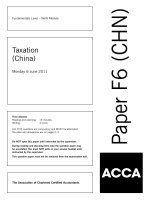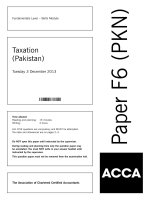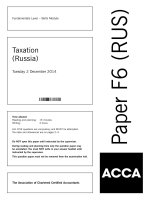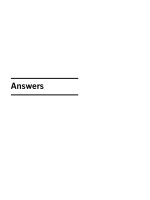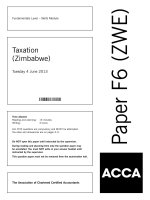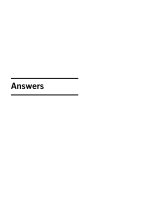ACCA f6 taxation south africa 2014 jun question
Bạn đang xem bản rút gọn của tài liệu. Xem và tải ngay bản đầy đủ của tài liệu tại đây (245.65 KB, 11 trang )
Taxation
(South Africa)
Tuesday 3 June 2014
Time allowed
Reading and planning:
Writing:
15 minutes
3 hours
ALL FIVE questions are compulsory and MUST be attempted.
Tax rates and allowances are on pages 2–4.
Do NOT open this paper until instructed by the supervisor.
During reading and planning time only the question paper may
be annotated. You must NOT write in your answer booklet until
instructed by the supervisor.
This question paper must not be removed from the examination hall.
The Association of Chartered Certified Accountants
Paper F6 (ZAF)
Fundamentals Level – Skills Module
SUPPLEMENTARY INSTRUCTIONS
1.
2.
3.
Calculations and workings need only be made to the nearest R.
All apportionments should be made to the nearest month.
All workings should be shown.
TAX RATES AND ALLOWANCES
The following tax rates and allowances are to be used in answering the questions.
Year ending 28 February 2014/31 March 2014
Rebates
Primary rebate
Secondary rebate (over 65)
Tertiary rebate (over 75)
R12,080
R6,750
R2,250
Interest exemption
Under 65
Over 65
R23,800
R34,500
Foreign dividend exemptions
Fully exempt where 10% or more of the equity shares and voting rights are held.
Fully exempt where received by a company from a foreign company resident in the same country as the recipient.
To the extent of any controlled foreign company inclusions (net of applicable foreign tax)
To the extent that the foreign dividend is from a company listed on the JSE
To the extent that the above do not apply:
For individuals 25/40ths of the dividend is exempt
For companies 13/28ths of the divided is exempt
Medical rebate rates
Single member
Member plus one dependant
Each subsequent dependant
R242
R484
R162
Dividends tax
15%
Companies
Normal tax rate
28%
Official rate of interest (assumed)
8%
Rates of normal tax payable by persons (other than companies)
for the year of assessment ended 28 February 2014
Where taxable income:
does not exceed R165,600
exceeds R165,600 but does
exceeds R258,750 but does
exceeds R358,110 but does
exceeds R500,940 but does
exceeds R638,600
not
not
not
not
exceed
exceed
exceed
exceed
R258,750
R358,110
R500,940
R638,600
2
18% of each R1 of the taxable income
R29,808 plus 25% of the amount over R165,600
R53,096 plus 30% of the amount over R258,750
R82,904 plus 35% of the amount over R358,110
R132,894 plus 38% of the amount over R500,940
R185,205 plus 40% of the amount over R638,600
Tax rates for small business corporations
for the year of assessment ended 31 March 2014
Where taxable income:
does not exceed R67,111
exceeds R67,111 but does not exceed R365,000
exceeds R365,000 but does not exceed R550,000
exceeds R550,000
Nil
7% of the amount over R67,111
R20,852 plus 21% of the amount over R365,000
R59,702 plus 28% of the amount over R550,000
Turnover tax rates for micro business corporations
for the year of assessment ended 31 March 2014
Where taxable turnover:
does not exceed R150,000
exceeds R150,000 but does
exceeds R300,000 but does
exceeds R500,000 but does
exceeds R750,000 but does
not
not
not
not
exceed
exceed
exceed
exceed
R300,000
R500,000
R750,000
R1,000,000
Nil
1% of the amount over R150,000
R1,500 plus 2% of the amount over R300,000
R5,500 plus 4% of the amount over R500,000
R15,500 plus 6% of the amount over R750,000
Car allowance
Maximum vehicle cost for actual expenses
R480,000
Fringe benefit (company car)
Benefit percentage (where no maintenance plan exists)
3·5%
Benefit percentage (where a maintenance plan exists)
3·25%
General business reduction: Benefit value x business kms/total kms (as per logbook)
Private fuel reduction: Private fuel (R) x private kms/total kms (as per logbook)
Private maintenance reduction: Private maintenance (R) x private kms/total kms (as per logbook)
Subsistence allowances
Deemed expenditure for meals and incidental costs (per Government regulation) R319 per day (local travel)
Deemed expenditure for incidental costs only (per Government regulation) R98 per day (local travel)
Deemed expenditure for meals and incidental costs (foreign travel) – (per published tables) will be supplied in
the question where relevant
Common capital allowances
New and unused manufacturing plant and equipment
Used or leased manufacturing plant and equipment
Small business corporation manufacturing plant and equipment
Small business corporation (other assets) – unless wear and tear
provides a greater deduction
40%/20%/20%/20%
20% each year for five tax years
100%
50%/30%/20%
Wear and tear (based on Binding General Ruling 7) will be supplied in the question where relevant
Manufacturing building allowance (unless seller’s rate supplied)
New or unused commercial building (not a manufacturing building)
– No deduction where another section of the Act applies to the building
– Where part of a building is acquired, 55% of the acquisition price is ‘cost’
– Where an improvement to the building is acquired, 30% of the acquisition price
of the improvement is ‘cost’
5%
5%
Research and development (R&D) expenditure
Additional 50% on expenditure incurred if R&D project is approved by the Minister of
Science and Technology and incurred for R&D after such approval
100%
3
[P.T.O.
Capital gains tax
Annual exclusion (while alive)
R30,000
Annual exclusion (in year of death)
R300,000
Primary residence exclusion
R2,000,000
(where proceeds are R2 million or less, the full gain is excluded for the portion of the property used for
domestic purposes as a primary residence)
Inclusion rate (natural persons)
33·3%
Inclusion rate (non-natural persons)
66·6%
Time apportioned base cost formula:
Y = B + [(P – B) x N]/(T + N)
P = R x B/(B + A)
Where deductible enhancement expenditure has been incurred after the valuation date, the time apportioned base
cost formulae change to:
Y = B + [(P1 – B1) x N]/(T + N)
P1 = R1 x B1/(A1 + B1)
Travel allowance table
for years of assessment commencing on or after 1 March 2013
Value of the vehicle (including value
added tax (VAT) but excluding
finance charges or interest)
R
0 – 60,000
60,001 – 120,000
120,001 – 180,000
180,001 – 240,000
240,001 – 300,000
300,001 – 360,000
360,001 – 420,000
420,001 – 480,000
Exceeds 480,000
Fixed cost
Fuel cost
Maintenance
cost
R p.a.
19,310
38,333
52,033
65,667
78,192
90,668
104,374
118,078
118,078
c/km
81·4
86·1
90·8
98·7
113·6
130·3
134·7
147·7
147·7
c/km
26·2
29·5
32·8
39·4
46·3
54·4
67·7
70·5
70·5
Note: Where reimbursement is based on actual business kilometres travelled and no other compensation is paid
to such employees and the kilometres travelled for business does not exceed 8,000, the prescribed rate is R3·24
per kilometre.
4
This is a blank page.
Question 1 begins on page 6.
5
[P.T.O.
ALL FIVE questions are compulsory and MUST be attempted
1
Harry’s Car Wash and Panelbeaters (Pty) Ltd (HCWP) is a company engaged in the washing and polishing and the
dent repair and repainting of motor vehicles. The washing and polishing of motor cars are not considered processes
of manufacture for the purposes of the Income Tax Act. However, the panelbeating and spray painting of motor cars
are accepted as processes of manufacture for the purposes of the Income Tax Act.
HCWP is classified as a small business corporation. The company is registered as a value added tax (VAT) vendor but
all amounts are stated excluding VAT.
The following information relates to HCWP’s financial year ended 31 March 2014:
(i)
Service fee income for the year amounted to R13,000,000, including R500,000 of interest income, but
excluding any effects from point (iii) below. As part of the fee charged, HCWP issues the customer with a paid
parking ticket for the parking garage (see point (vi) below). The cost to HCWP of the parking tickets for the period
amounted to R175,000.
(ii)
During the tax year, a number of vehicles were scratched by the employees when parking the vehicles after they
were washed or in moving the vehicles around the service stations. HCWP only insures against significant
damage to customer vehicles and as a result it settled an amount of R70,000 out of its own funds with
customers whose vehicles suffered only minor damage. In other cases, repair work was completed on the
customer vehicles by HCWP at no charge to the customer. These repairs cost the company R30,000. At
31 March 2014, HCWP provided for claims made by customers amounting to R25,000, but the company
believes that only R15,000 of these claims are genuine and will have to be settled.
(iii) The spray booth used for spray painting vehicles was damaged when the compressor exploded. As this was
HCWP’s only spray booth, the company had taken out a loss of income insurance policy in case damage to the
booth resulted in it being inoperable for a time. The insurance company paid R1,000,000 to HCWP in terms of
this policy for the months of June and July 2013.
The compressor had to be replaced at a cost of R530,000 and the repairs to the spray booth cost a further
R380,000. In terms of the insurance on the company’s assets, the insurance company paid out R370,000 in
respect of the compressor replacement and R150,000 in respect of the repairs to the spray booth, in addition
to the loss of income payment. The acquisition and the repair work were completed by the end of July 2013.
The original compressor had been acquired for R400,000 in August 2011 and the spray booth for R650,000
in the same month.
(iv) None of the other machines used by the company were replaced in the current year. These other machines
comprise the following:
1. Pressure cleaning hoses (part of the washing process) with an original cost of R140,000 on 1 April 2011.
2. Pressure paint spray nozzles (part of the spray painting process) with an original cost of R80,000 on
1 August 2012.
3. Motorised polishing tools (part of the washing process) with an original cost of R180,000 on 1 February
2013.
(v)
Consumables used in the business for the year amounted to R1,900,000. The consumables on hand as at
1 April 2013 had a cost of R450,000 and as at 31 March 2014 had a cost of R350,000.
(vi) HCWP operates from a shopping mall parking garage. Rent for the period 1 July 2013 to 30 June 2014 of
R450,000 was paid on 1 June 2013. On 1 June 2012, the rental paid for the period 1 July 2012 to 30 June
2013 had been R400,000.
(vii) While doubtful debts are small, some customers leave without paying. Some of these are traceable but a few
are written off as bad. The doubtful debts as recorded in HCWP’s financial records were R3,000 as at 31 March
2014 and had been R4,000 as at 31 March 2013. Debts written off as bad in the year amounted to R1,000.
The Commissioner for the South African Revenue Service (SARS) accepts 25% of the listing of doubtful debtors
for deduction purposes.
(viii) Other tax deductible expenses for the year amounted to R7,150,000.
(ix) Other capital gains arising in the year amounted to R300,000.
6
(x)
HCWP’s provisional tax payments have been estimated as totalling R800,000.
Other information:
(1)
HCWP will apply any provision which reduces its liability for income tax, without incurring penalties.
(2)
The Commissioner for SARS permits any qualifying asset for wear and tear to be written off over five years in
terms of Binding General Ruling 7.
(3)
You should assume that the current legislation also applied in all relevant prior years.
Required:
(a) Discuss whether or not the settlement payments and repairs (as per point (ii)) will be deductible for income
tax purposes by Harry’s Car Wash and Panelbeaters (Pty) Ltd.
(8 marks)
(b) Calculate the income tax liability of Harry’s Car Wash and Panelbeaters (Pty) Ltd for the year of assessment
ended 31 March 2014.
Notes:
1. Your treatment of the items in point (ii) should be consistent with the conclusion stated in your answer
to part (a).
2. Indicate clearly any items of income which are exempt or amounts which are not deductible by the use
of a zero.
(22 marks)
(30 marks)
7
[P.T.O.
2
Mrs Samantha Parker (aged 33) is a South African resident taxpayer. She was employed by a business consultancy
firm (BC Group) for much of the 2014 year of assessment. On 31 October 2013, Samantha resigned to pursue
personal interests.
Information relating to Samantha for the year of assessment ending 28 February 2014 is given below.
Employment package
(i)
A cash salary of R25,000 per month.
(ii) BC Group contributed 7% of her cash salary to its company pension fund for Samantha.
(iii) Samantha had been issued with a company laptop costing R16,000 on 1 May 2012 as well as a 3G data card
for which the company pays R200 for data per month. Samantha used the computer and data card mainly for
business purposes. The data card is in the name of the company. Both the computer and data card had to be
returned to the company when Samantha resigned.
(iv) BC Group paid Samantha R2,000 per month as a travel allowance. Samantha used her own motor car for client
visits. For the entire year, she travelled 12,000 kilometres for client to client trips, a further 8,000 kilometres for
office to client visits, 2,000 kilometres for home to client visits, 4,000 kilometres for home to office trips and a
further 13,000 kilometres for other private travel. She also incurred total fuel costs of R48,000 and purchased
new tyres at a cost of R8,000; all her remaining maintenance was covered by the maintenance plan on the
vehicle. The car had cost her R437,000 (including value added tax) on 1 March 2012.
(v) BC Group pays the entire scheme rate to the medical scheme on its employees’ behalf. For Samantha, this
amounted to R3,500 per month in total for herself, her husband and one child. Samantha’s husband is
considered ‘disabled’ for income tax purposes.
(vi) BC Group paid Samantha a resignation bonus of R50,000 in recognition of her high quality work over the years.
Other information:
(1) Samantha contributed R3,000 per month to a retirement annuity fund (RAF) for the full year of assessment and
these contributions were not taken into account by BC Group when calculating the employees tax withheld.
(2) Samantha’s husband took over payment of the medical contributions for himself, his child and Samantha (as in
item (v)) with effect from 1 November 2013. Samantha incurred additional medical costs amounting to R2,000
in the year for her child, which were not recoverable from the medical scheme.
(3) Samantha earned R32,000 in interest and a further R7,000 in foreign dividends for which none of the specific
foreign dividend exemptions are applicable.
(4) Samantha is not a provisional taxpayer.
Required:
(a) Calculate the employees tax withheld and paid to the South African Revenue Service (SARS) by BC Group
for the year of assessment ended 28 February 2014 in respect of Samantha’s employment.
(11 marks)
(b) Calculate the normal tax liability due by, or refund due to, Samantha for the year of assessment ended
28 February 2014.
(14 marks)
Note: Indicate clearly any items of income which are exempt or amounts which are not deductible by the use of a
zero.
(25 marks)
8
3
Joe Ngcobo sold his home in Constantia, South Africa, for R17,200,000 on 15 January 2014. Joe had acquired the
property on 1 May 1999 for R3,400,000. The property does not exceed two hectares. Joe and his family have always
lived in the property as their primary residence.
Apart from the purchase price paid, Joe incurred the following costs with respect to the property:
On acquisition and prior to 1 October 2001:
(i)
On acquisition: Transfer duty and legal fees of R243,000.
(ii)
November 2000: Built another garage for the property at a cost of R55,000.
On or after 1 October 2001:
(iii) June 2002: Renovated the bathrooms at a cost of R190,000.
(iv) May 2004: Built a cottage on the property to use as a home office at a cost of R560,000. This cottage takes
up 2% of the plot.
(v)
September 2009: Replaced the kitchen at a cost of R950,000.
(vi) April 2010: Repaired the roof at a cost of R150,000.
(vii) October 2011: Installed a solar geyser and solar system for power at a cost of R550,000.
(viii) On sale: Agent’s commission and legal fees of R900,000.
A valuator has confirmed that items (iii) and (vi) do not represent enhancements to the value of the property on the
date of disposal.
The property had been valued on 1 October 2001 for the amount of R5,400,000.
Joe made no other capital disposals in the 2014 year of assessment and has no capital losses brought forward. He
is taxed at the maximum marginal rate.
Required:
Calculate the income tax payable by Joe Ngcobo on the sale of the primary residence, on 15 January 2014.
(20 marks)
9
[P.T.O.
4
Cheap Tours and Transport (Pty) Ltd (CTT), a registered value added tax (VAT) vendor, operates a tourism and
transportation business. The tours are considered a VAT-able supply, whereas the separately sold transport is an
exempt supply where it is within South Africa and zero rated where it is carried out in a country outside South Africa.
The Commissioner for the South African Revenue Service (SARS) has agreed to an apportionment of 60% to taxable
supplies and 40% to exempt supplies.
CTT’s transactions for its two-month VAT period, May to June 2014, are detailed below. All amounts are stated
inclusive of VAT, where appropriate.
(i)
CTT sold tours amounting to R12,000,000 to South African residents. These charges covered only the fee for
the accommodation and guides, not the transport.
(ii)
60% of the tours involved transport within South Africa only. This transportation, which was by road, was
charged separately from the tour cost and amounted to R2,500,000. The remaining 40% of the tours involved
transport into Namibia and Botswana. The separate charges for this transport amounted to R1,500,000.
(iii) Payments of R3,000,000 were made to commercial accommodation vendors for tour guest accommodation. Of
these payments, R1,200,000 pertains to the accommodation charges of lodges in Namibia and Botswana.
(iv) Bad debts, relating to tour only debtors, amounting to R40,000 were written off in the VAT period.
(v)
Two vehicles were acquired and taken delivery of during the VAT period. The first vehicle (a 12-seater bus),
acquired in May, was purchased second-hand from a VAT vendor for R350,000. This bus is to be used
exclusively for tours and will not be used within the transport section of the business. The second vehicle (an
SUV to carry a maximum of four passengers plus one driver), acquired in June, was purchased new for
R500,000.
(vi) In April, CTT had also purchased a new SUV for R570,000. The managing director has been given exclusive
use of this vehicle.
(vii) In May, a pool table was purchased for the recreational use by CTT’s staff. The table cost the company R3,000.
(viii) In June, a new server was purchased for R25,000. The server will run CTT’s IT commitments for its entire
business.
Required:
(a) Briefly explain when a business may be deregistered for value added tax (VAT) purposes and how this can
be achieved.
(3 marks)
(b) Calculate the input and output VAT effects of Cheap Tours and Transport (Pty) Ltd’s transactions (i) to (viii)
above, giving brief explanations for your treatment of each item.
Note: Indicate clearly any transaction which does not give rise to a VAT effect by the use of zero.
(10 marks)
(c) State the amount payable to/refundable from the South African Revenue Service (SARS) for Cheap Tours and
Transport (Pty) Ltd’s VAT period May to June 2014, together with the date by which the VAT return must
be filed electronically and any payment must be made.
(2 marks)
(15 marks)
10
5
(a) State the persons who are required to keep records, books of account or documents with respect to a tax
period.
(3 marks)
(b) List and briefly describe the different types of assessment which the South African Revenue Service (SARS)
(6 marks)
can issue.
(c) State the persons who must register as tax practitioners with SARS.
(1 mark)
(10 marks)
End of Question Paper
11
